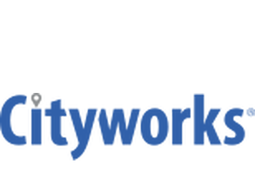
Technology Category
- Functional Applications - Transportation Management Systems (TMS)
- Infrastructure as a Service (IaaS) - Cloud Databases
Applicable Industries
- Cities & Municipalities
- Transportation
Applicable Functions
- Logistics & Transportation
Use Cases
- Traffic Monitoring
- Transportation Simulation
Services
- System Integration
The Customer
City of Oakland Department of Transportation (OakDOT)
About The Customer
The customer in this case study is the City of Oakland Department of Transportation (OakDOT). OakDOT is responsible for managing the city's transportation infrastructure and ensuring the safety of its residents. The department receives numerous traffic safety improvement requests from residents and other stakeholders. However, due to limited resources, they were unable to address all these requests. Therefore, they needed a solution that would help them prioritize these requests based on various factors such as traffic collision history, land use proximity, and equity. The goal was to ensure that traditionally underserved and high-risk areas are not overlooked.
The Challenge
The City of Oakland Department of Transportation (OakDOT) was faced with the challenge of receiving more traffic safety improvement requests than they had the resources to implement. The city needed a method to effectively prioritize these service requests. The challenge was further compounded by the fact that traffic-related incidents were the leading cause of death for people aged 5 to 24, and the second leading cause for all other age groups under 85 in the U.S. Low-income communities and communities of color were more likely to experience traffic-related injury and death. Therefore, the city needed a solution that would not only prioritize service requests but also ensure equity in service delivery.
The Solution
OakDOT implemented an integrated solution for prioritizing traffic safety requests in areas of need. The city integrated their Cityworks public asset management platform with SeeClickFix, a 311 request and work management app known as OAK 311. This app allows residents to report problems they encounter in their community. These reports are then sent to Cityworks as service requests. OakDOT created a data-driven prioritization model that leverages Cityworks and ArcGIS to assign a priority score, or value, to each street segment in the community. Prioritization scores are based on three core variables: traffic collision history, land use proximity, and equity. Each of these factors is weighted equally (33 percent) to calculate the final prioritization score. Once the final prioritization scores are calculated, they are assigned to their respective street segments in GIS. Cityworks then incorporates the GIS layer, provides map visualization, and displays the final prioritization scores in the context of the Cityworks map.
Operational Impact

Case Study missing?
Start adding your own!
Register with your work email and create a new case study profile for your business.
Related Case Studies.

Case Study
Turning A Stadium Into A Smart Building
Honeywell created what it called the “intelligent system” for the National Stadium in Beijing, China, turning the venue for the opening and closing events at the 2008 Summer Olympics into a “smart building.” Designed by highly controversial artist Ai Weiwei, the “Bird’s Nest” remains one of the most impressive feats of stadium architecture in the world. The 250,000 square meter structure housed more than 100,000 athletes and spectators at a time. To accommodate such capacity, China turned to Honeywell’s EBI Integrated Building Management System to create an integrated “intelligent system” for improved building security, safety and energy efficiency.
.png)
Case Study
Smart Street Light Network (Copenhagen)
Key stakeholders are taking a comprehensive approach to rethinking smart city innovation. City leaders have collaborated through partnerships involving government, research institutions and solution providers. The Copenhagen Solutions Lab is one of the leading organizations at the forefront of this movement. By bringing together manufacturers with municipal buyers, the Copenhagen Solutions Lab has catalyzed the development and deployment of next-generation smart city innovations. Copenhagen is leveraging this unique approach to accelerate the implementation of smart city solutions. One of the primary focus areas is LED street lighting.

Case Study
Airport SCADA Systems Improve Service Levels
Modern airports are one of the busiest environments on Earth and rely on process automation equipment to ensure service operators achieve their KPIs. Increasingly airport SCADA systems are being used to control all aspects of the operation and associated facilities. This is because unplanned system downtime can cost dearly, both in terms of reduced revenues and the associated loss of customer satisfaction due to inevitable travel inconvenience and disruption.

Case Study
IoT-based Fleet Intelligence Innovation
Speed to market is precious for DRVR, a rapidly growing start-up company. With a business model dependent on reliable mobile data, managers were spending their lives trying to negotiate data roaming deals with mobile network operators in different countries. And, even then, service quality was a constant concern.

Case Study
Buoy Status Monitoring with LoRa
The Netherlands are well-known for their inland waterways, canals, sluices and of course port activities. The Dutch Ministry of Infrastructure indicates that there are thousands of buoys and fixed items in and near water environments that would profit from IoT monitoring. One of the problems with buoys for example, is that they get hit by ships and the anchor cable breaks. Without connectivity, it takes quite some time to find out that something has happened with that buoy. Not to mention the costs of renting a boat to go to the buoy to fix it. Another important issue, is that there is no real-time monitoring of the buoys at this moment. Only by physically visiting the object on the water, one gains insight in its status.




